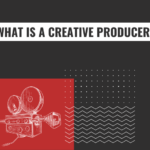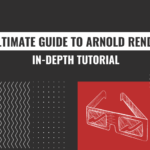How to Use Camera Lenses in Film
AN IN-DEPTH ANALYSIS OF THE ARTISTIC APPROACH TO USING CAMERA LENSES AS A FILMMAKER.
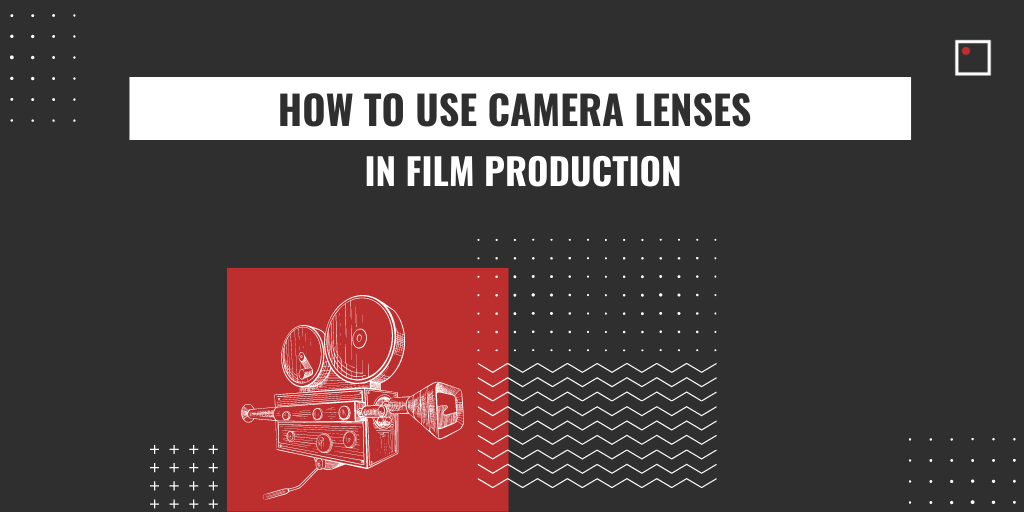
By Piper Courtenay
If cinematography is the art of storytelling in film, then lenses are the tools. Lenses can affect the way a story is told. For budding filmmakers, understanding how to choose the right lens is imperative to building a relationship with the audience.
For John Pozer, senior film production instructor and curriculum advisor at InFocus Film School, cinematography pivots around creating a flow between images. He asserts both camera placement and lens choices are paramount to that seamless consistency.
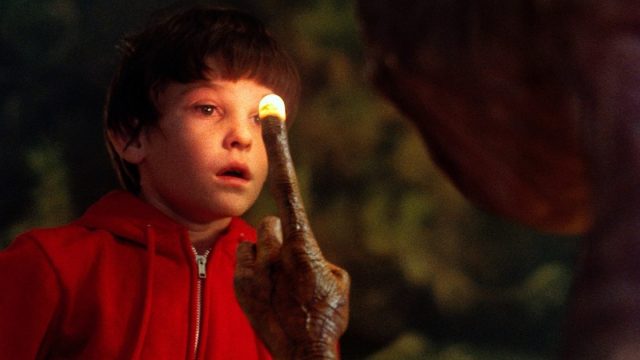
“It’s just not a shot. It’s just not a frame,” says Pozer. “It is really that marriage between the light, the camera, and the choice of lens, and how we’re going to tell our story with those tools.”
Good cinematography begins in the initial conceptualization. Selecting the right equipment and designing a flow of images that will tell the story are key. Achieving that harmony often begins with the correct lens selection.

‘The Order’ | InFocus Film School Student Project
“Cinematography is really the eye of the camera, the eye of the filmmaker,” says Pozer. “It is, in some ways, more powerful than our own eye because it can selectively make choices to create an image. Our eyes are very flexible. We can see a close-up, we can see a wide shot with our own eyes. But a camera and the lens is going to specify those shots, those frames and what we’re seeing through the lens.”
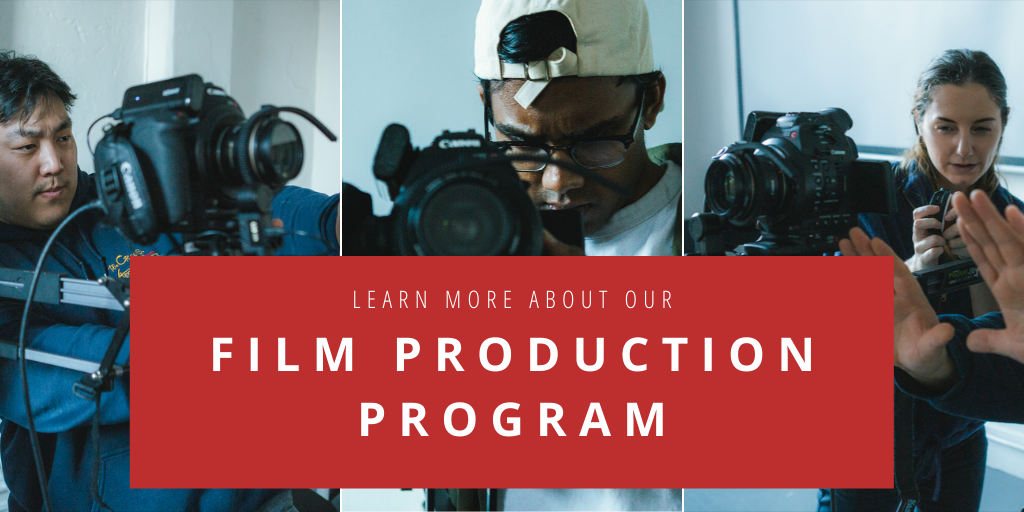
Click here to learn more about InFocus Film School’s Writing for Film and Television Program!
PLANNING YOUR SHOTS
When planning a shot, Pozer describes what he takes into consideration when framing: placing a camera and selecting its lens. First, every detail in the frame needs to be carefully catalogued, whether it is something presented by the actor’s appearance or something in the surrounding environment. He takes into account each item in the foreground, the middle, and the background. Once the hard items are placed in the frame, Pozer says a cinematographer’s job is to understand how to use those to help convey both the message of the shot and the story of the overall film. The steadfast objects and their analogical importance are intrinsically tied together in any shot.
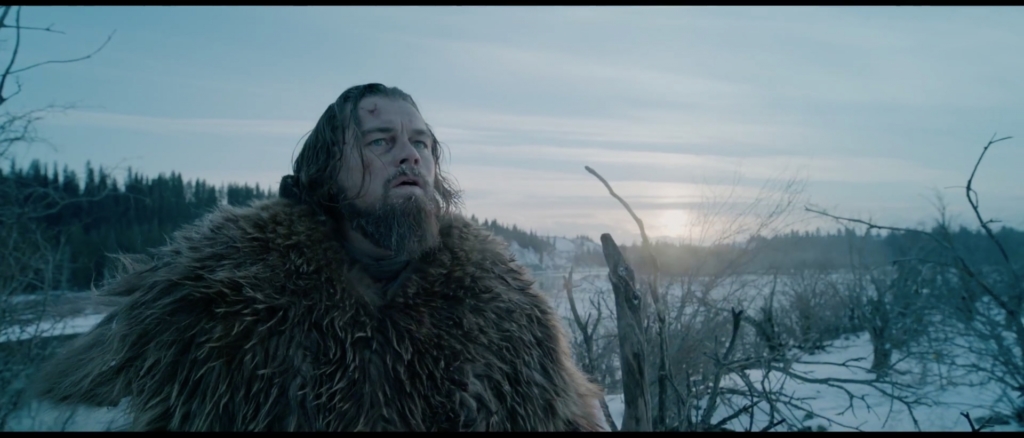
‘The Revenant’
“If I’m dealing with a film [featuring] a wide, open landscape, like The Revenant, the tundra and the environment are just as important as the characters and their place in it. We know we want to see that full expanse of landscape, we want a wide lens, we want to basically have a deep depth of field, and we want to sell that landscape and the character in that landscape. So, in that sense, I’m thinking about how much focus I’m going to get out of a choice of a lens.”
When setting up a shot, it’s important to ask yourself a series of questions, like: What message is this going to convey? Where does it fit in the overarching plot? How does this scene impact the story? What do I want this shot to make the audience notice, feel, or understand the character/setting/action? Where do I want the audience’s eyes to land? Where don’t I want the audience’s attention to be drawn?
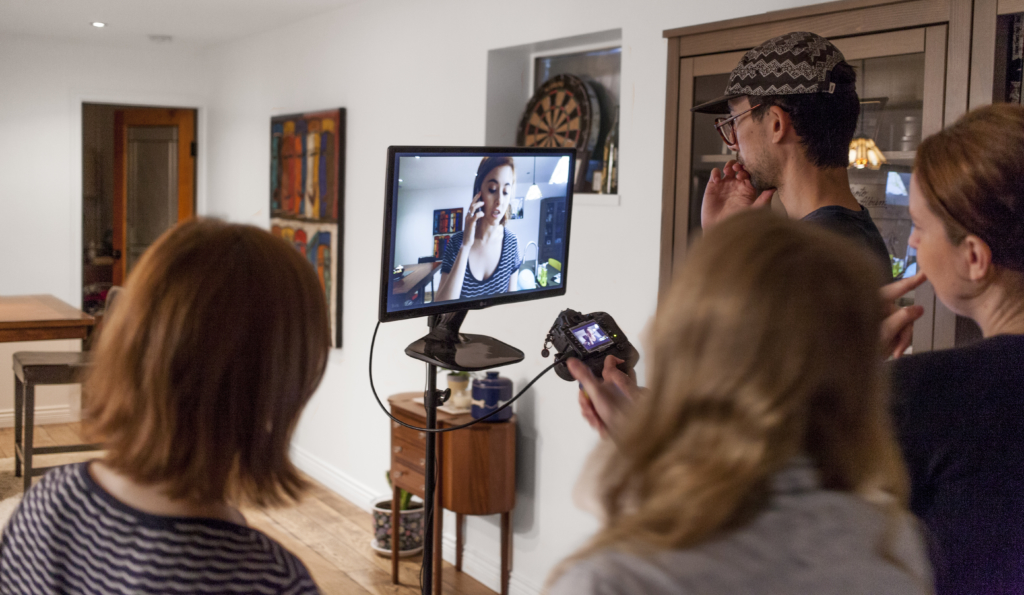
Behind the Scenes of an InFocus Film School Shoot
Pozer calls this process of analysis a “team effort,” in that it can be helpful, even imperative, to discuss these details with the directors, writers, producers, and actors.
Beyond the message a filmmaker intends to convey, there are other elements to take into consideration with regard to lens selection. The shape of the actor’s face, for example, can be distorted or augmented, which can be a powerful tool if applied correctly. Pozer uses Misery (1990) as an example.
“There are a lot of wide-angle lenses because Kathy Bates is right in your face. It’s right as she’s at the edge of the bed, very close to the captive James Caan, and this choice of how to exaggerate an emotional moment is very important for me.”
So, where a wide-angle lens may mostly play its most useful role in shooting vast rolling landscapes, Pozer says not to fall to the common error of ruling it out as a very strong lens choice for an indoors shot with, for example, in the case of “an aggressive or crazed character who is literally in your face.”
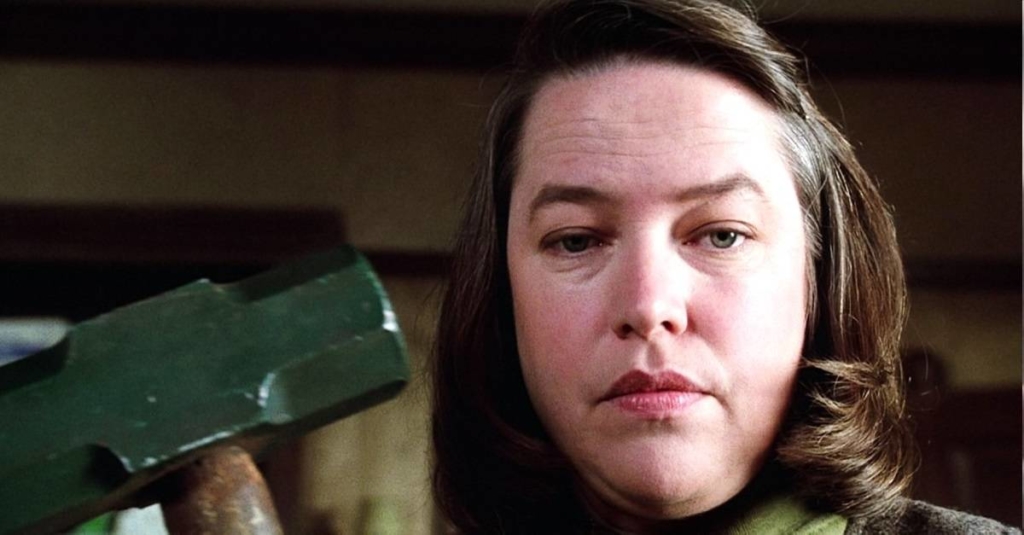
Kathy Bates in ‘Misery’
A wide-angle lens can be helpful in drawing the audience closer to a character, without moving the camera physically closer to the actor. “There are reasons for getting close to somebody, watching them think, watching a task, or watching a detail,” he adds. “We’re always trying to look at the physiology of the eye, and then the storytelling power of any lens choice.”
Devan Scott, a cinematographer and colourist also teaching at InFocus Film School, suggests maintaining a constant consideration for the viewer’s position during a shot’s planning stages.
“My thought is always about the audience,” says Scott. “My thought when picking a lens is always what the audience’s relationship is to the character. Do we want the audience to feel immersed and inside a scene, or do we want to feel some distance?”
THE LENS AS A TOOL
There are several things lens selection impacts the way an image is captured, the first being focal length and field of view.
“The focal length of a lens, along with the size of your image capture medium, determines your field of view,” explains Scott.
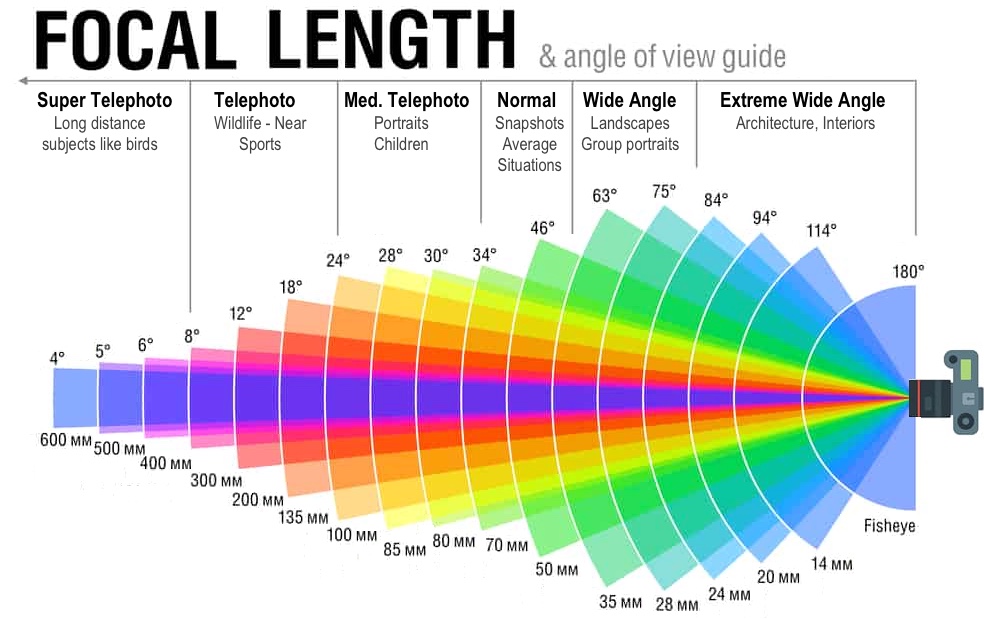
Focal Length and Angle of View Guide
“Field of view is essentially how much do you see in front of the camera. Your camera sees in kind of a cone, and the wider your cone the more you see. The narrower your cone, the higher your focal length, the less you see, right? You can imagine it as a frame in front of you. The longer the focal length, the narrower field of view, the wider the focal length, the wider field of view, and this has many implications.”
LENSES AND STYLE
Scott adds that each filmmaker has generally developed a type of language—a set of technical preferences—blending their favourite focal length and field of view to achieve a certain discernible style.
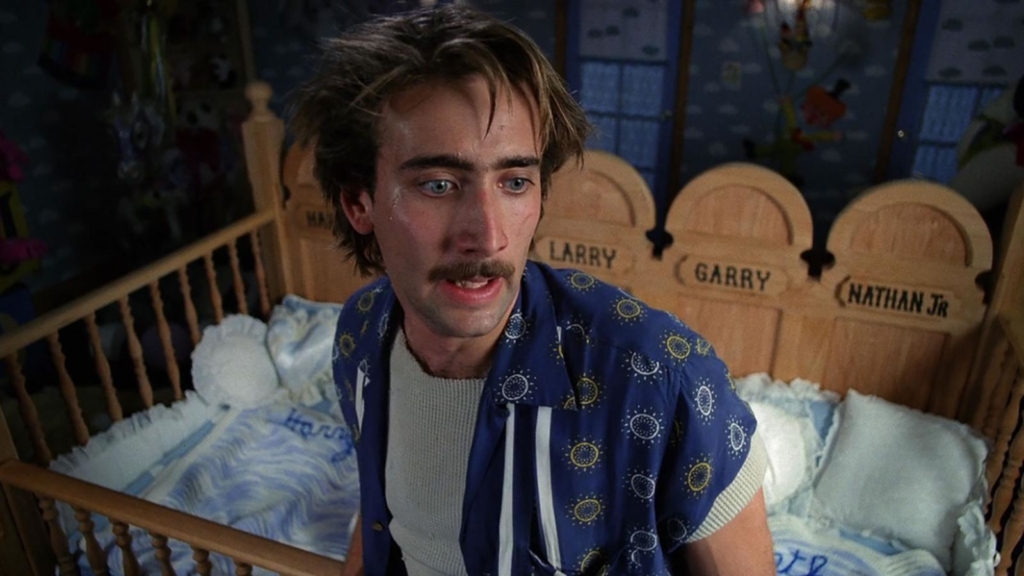
Nicholas Cage in ‘Raising Arizona’
He elaborates: “Ask a cinematographer like Barry Sonnenfeld, who shot When Harry Met Sally and the early Cohen brother films, why he chooses wide lenses and long lenses. He would say, there are two types of films. There are wacky films and there are handsome films. Wacky films are all shot 18-to-20, wide-angle, distorted. You know you’re in the space, an example of this is Raising Arizona. Then there are handsome films, ones you’re supposed to take seriously, and you’re supposed to make your actors look good. [They’re shot in] 35-to-85, an example of this would be Miller’s Crossing or When Harry Met Sally. If you ask another cinematographer, Emmanuel Lubezki for example, he favours wide lenses. He likes the intimacy they provide. He likes that immersion. He’ll shoot a drama with wide-angle lenses. He’ll shoot a wacky comedy with wide-angle lenses. It won’t really matter. It’s the way he sees. Then you have a cinematographer like Roger Deakins, who prizes a conversational relationship between the audience and the characters. If he wants to feel like he’s watching someone [or] like we’re talking to someone, he’ll go on a medium-wide 28-to-40.”
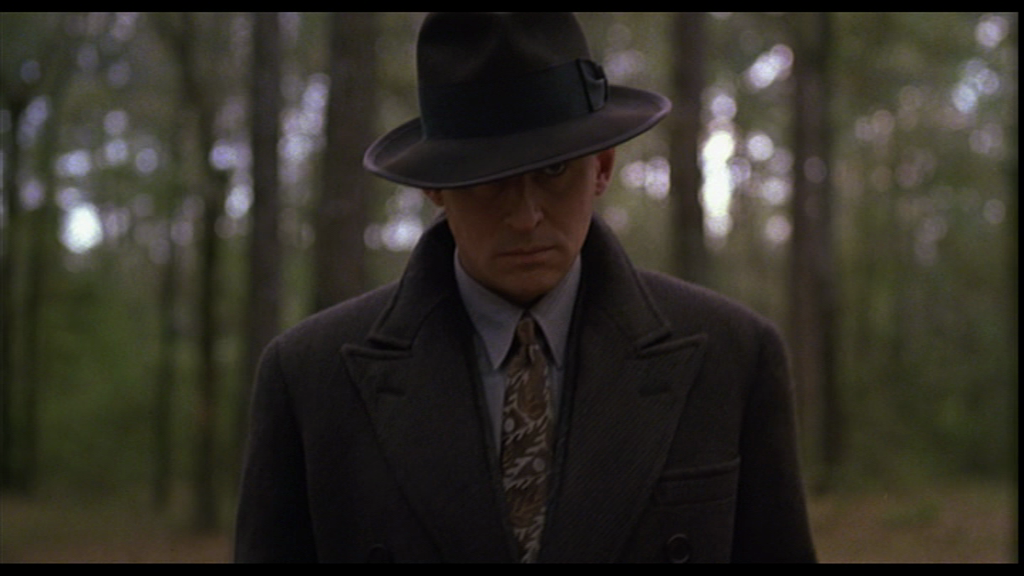
Gabriel Byrne in ‘Miller’s Crossing’
CAMERA PLACEMENT
Camera placement and lens selection are harmonious in crafting an audience perspective. Where a 28-millimetre lens placed three feet away from the focal point can convey a conversational closeness, a 200-millimetre lens across the room can feel like the audience is watching the actor from afar. A massive telephoto lens shooting down the street can make a viewer feel embedded in the action, even though they are far away from it.
Pozer says this trick can extend to changing an environment, as well. “If I want to make a room larger, I’m going to use a wider lens,” he says, adding that a longer lens can be useful in creating a close sense of intimacy in a big room.
Pozer believes there are classic approaches to a shot-lens relationship, but it boils down to how a filmmaker wants to convey the message behind the shot. He suggests experimenting with various combinations.
“These ideas can change and [a cinematographer] can swap out. Normally, what we’re doing is [expressing] an extremely emotional event for an actor or for a character. I could isolate a character with a wide-angle lens, I could also isolate them with a long lens.”
A long telephoto lens is going to have that short depth of field, creating a shot that makes the character pop out of the set. As the audience can’t see the background, the character stands alone in the centre of focus.
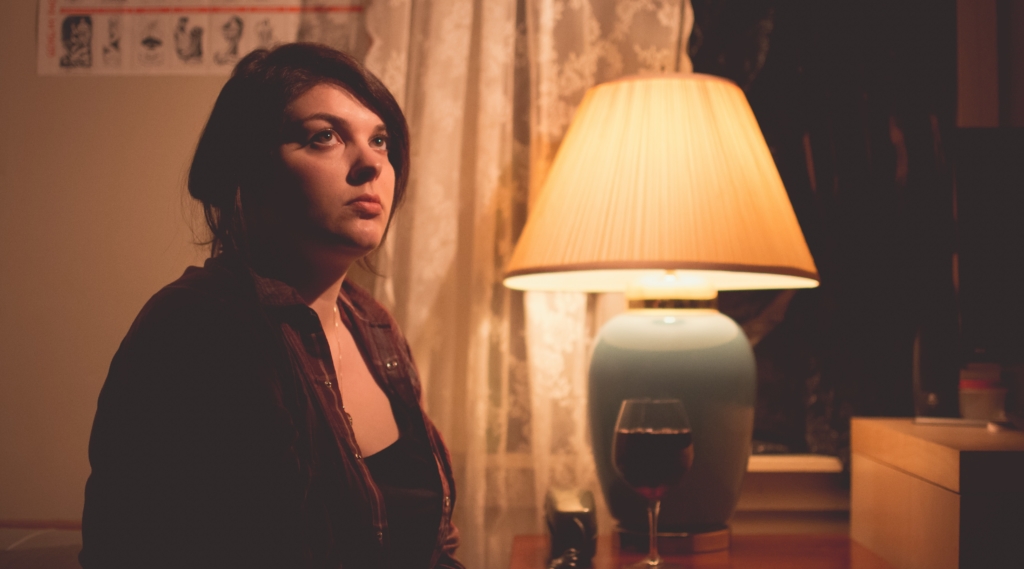
InFocus Film School Behind the Scenes
“Conversely, I could isolate that character by choosing a wider lens, marching that character closer to the lens and leaving them in this sort of different world,” he adds. “A world that you or I could not necessarily accomplish.”
LENS FILTERS
Other considerations in lens selection are the tone and colour of a shot. Modern lenses can produce a crisp, colour-accurate image, while vintage technology can have an inherent aged and textured filter that lends to the personality of a shot. It’s important to consider with new technology that details can appear harsher—for example, an actor’s skin blemishes and pores can become more pronounced—whereas an older lens may soften those details.
In cases where a lens doesn’t achieve the desired image, a filter may be applied. A neutral density filter, or ND filter, reduces the intensity of the light entering the camera without impacting the hue. This filter can be helpful in avoiding overexposure when shooting with a wide-aperture lens. A polarizing filter can be useful in counteracting glares or reflections from glass or water, or in generally deepening a shot’s overall contrast.

VIEWFINDERS
One last consideration for the budding cinematographer and/or director is the use of digital viewfinder technology such as the Artemis system. A standard optical viewfinder has limitations as only one person can look through it at a time, and those discussing the shot may not necessarily be looking at the same thing. Artemis Pro is a Director’s software application that allows the director to line up a shot reproducing any motion picture or stills camera and lens combination on the market on their smartphone.
FILM RECOMMENDATIONS FOR LENS USE
Both Scott and Pozer suggest unpacking films you like to understand the stylistic decisions made behind lens choices and camera position. In watching a movie for a second or third time, with the goal of breaking down the mechanics of its construction, one can start to see the choices and intention of a filmmaker—beyond the surface of the story or feelings it elicits.
Scott recommends Tinker, Tailor Soldier Spy (2011), shot by Thomas Alfredson.
“It is a film about some very, very sad spies. It is shot almost entirely with telephoto lenses: very long lenses to give the audience a sense they are watching from afar, but the watchers being watched. The audience partakes in that voyeurism, they are never allowed any sense of humour or closeness with the characters. They are kept at a distance. And that is combined with a lot of small cramped spaces. You have this juxtaposition between these tiny spaces and the fact that the camera is often a football field away from the action on a zoom lens slowly zooming in. This gives the audience a real sense of distance of voyeurism. They are not partaking in this film. They are observing it.”
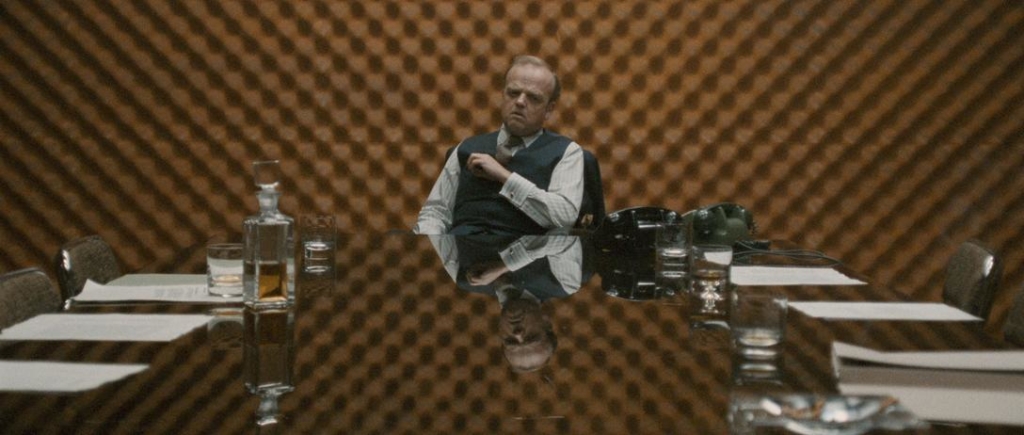
Pozer says during his time as a film student, he often studied Chan is Missing (1982), one of the first films directed by Wayne Wang. “When you see just a 10-millimetre lens used all the way through a film, you start to get an idea of what the filmmaker is learning and the choices the filmmaker makes. Can it inform your filmmaking? Absolutely. I [look to] reading about films, reading about cinematography, trying to understand sometimes-conventional choices. In the grand scheme of things, something like picking one lens for an entire show seems to me, for some people, kind of a radical idea. And that’s a really interesting thing to study. How effective was that choice? How effective was the challenge and what was the meaning of the challenge? You might only have enough money for one lens, which might be another reason why you’re going to go in that direction. But [these challenges] are really there.”
Related Links:
What is the Auteur Theory in Filmmaking?




